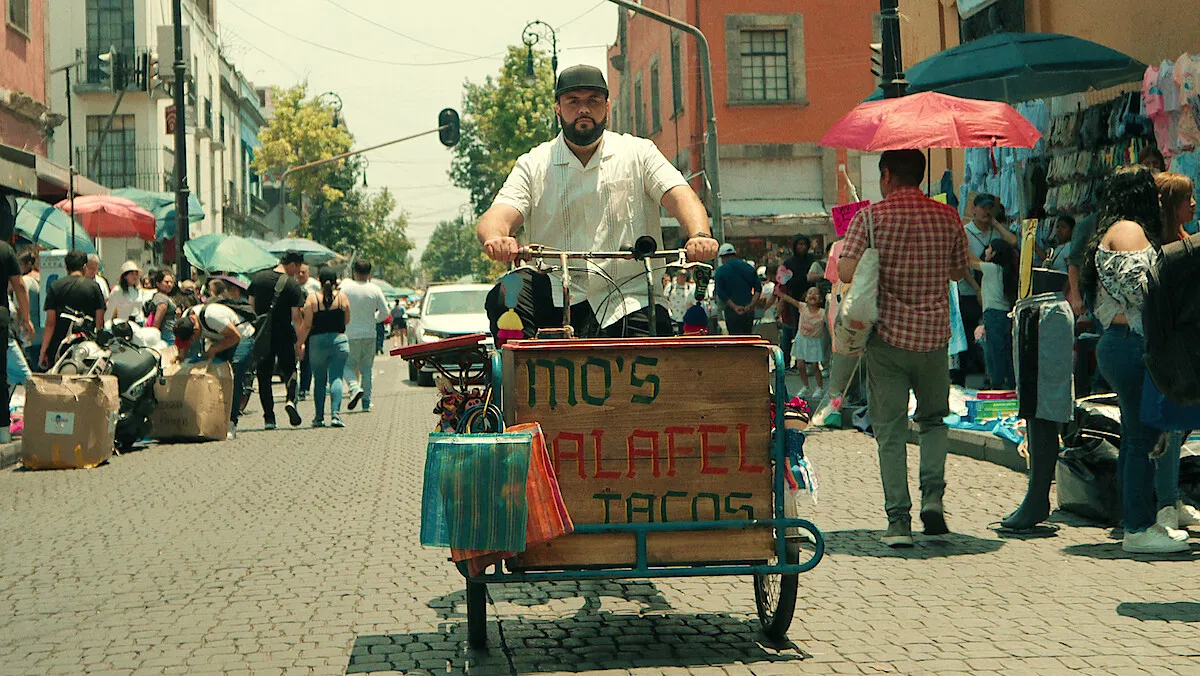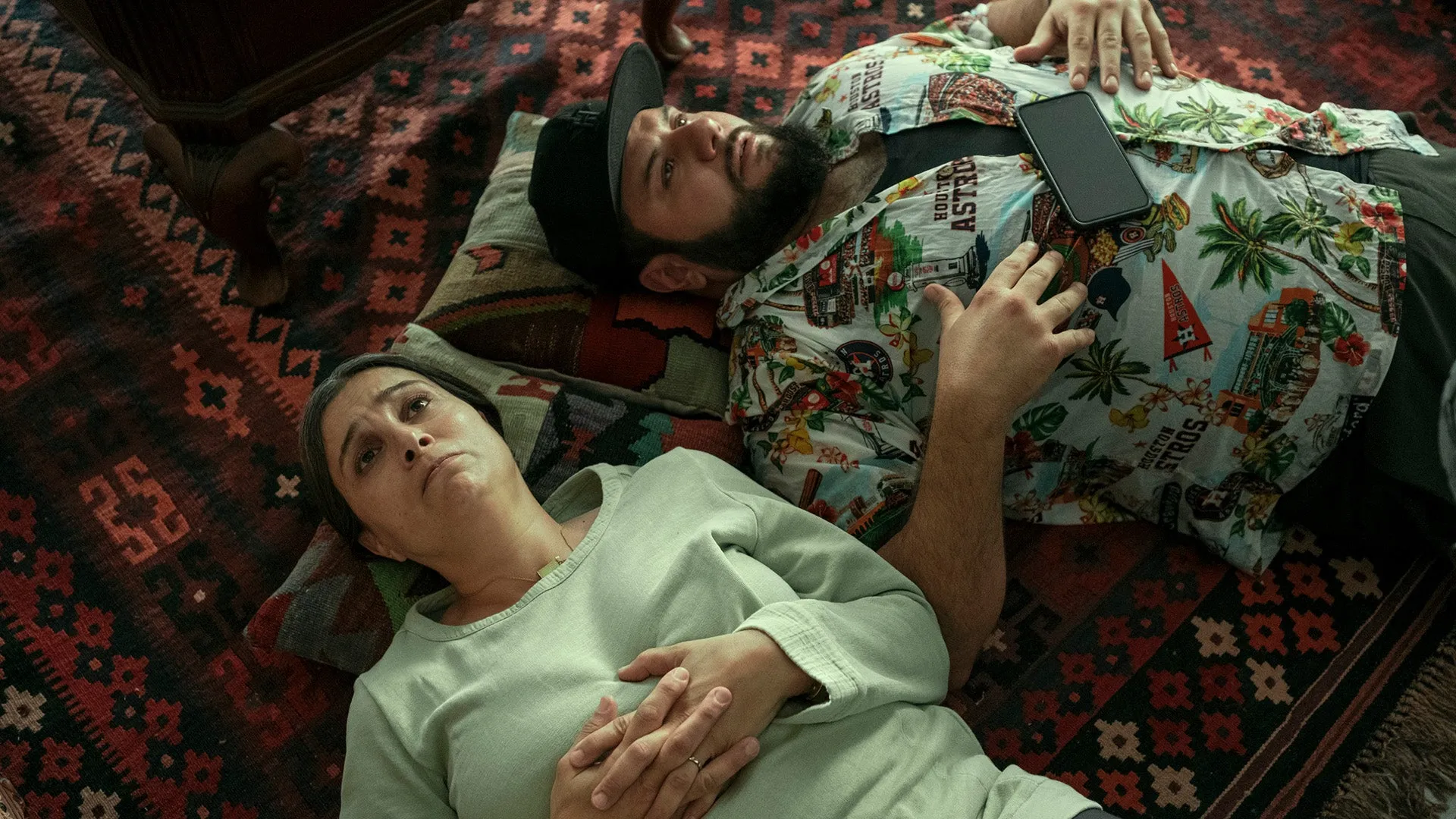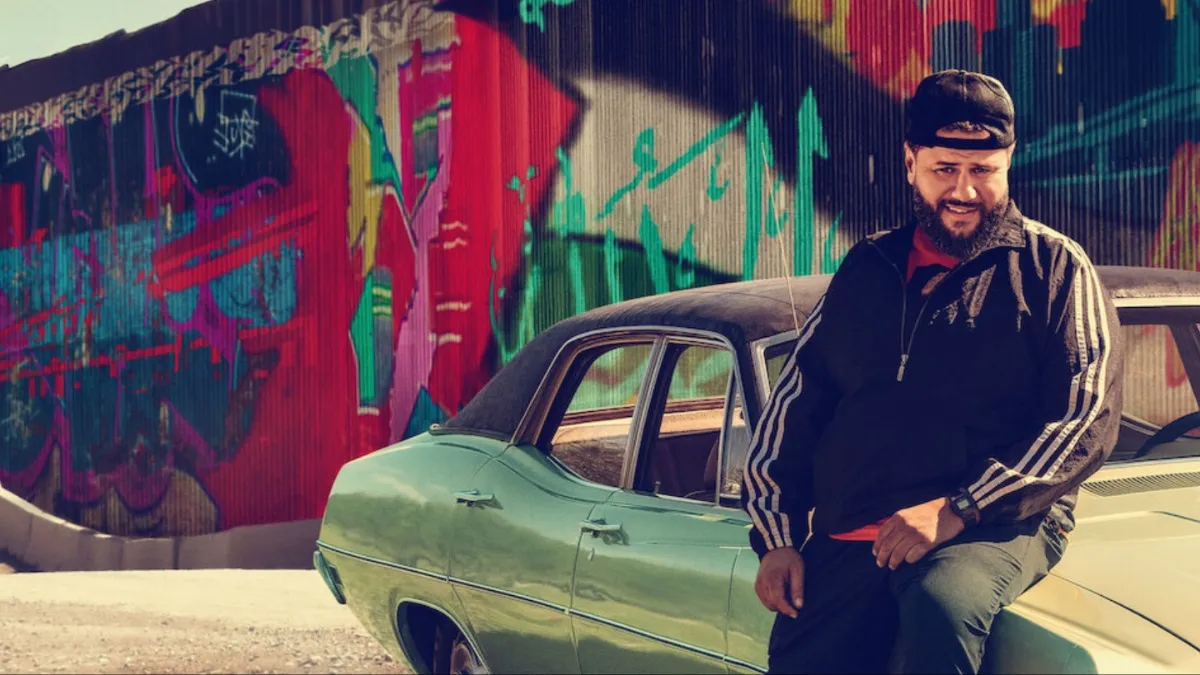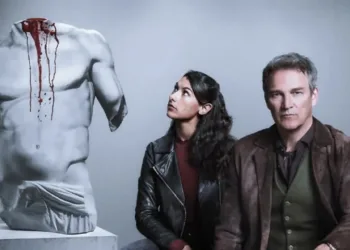“Mo” season 2 returns with compelling storytelling and well-crafted humor, following Mo Najjar, portrayed by comedian Mohammed Amer. Stranded in Mexico while wrestling through U.S. asylum process bureaucracy, Mo represents immigrant experiences—suspended between cultures and dreams.
The season’s depth emerges from its narrative continuation after a two-and-a-half-year pause, exploring identity and belonging during societal divisions.
The series confronts statelessness, revealing Mo’s challenges as an undocumented immigrant. Contrasting his vibrant surroundings with personal emotional struggles, the show exposes the complexities of America’s immigration system.
Using dark comedy and authentic experiences, “Mo” pushes viewers to understand displacement, creating space for empathy while highlighting the critical demand for genuine representation in media that mirrors diverse human stories.
Navigating Identity: Character Development and Performances in Mo Season 2
In “Mo” Season 2, Mohammed Amer’s portrayal of Mo Najjar exemplifies deep character growth, as he moves through the challenging landscape of statelessness while seeking belonging. This season finds Mo trapped in Mexico, his identity intricately connected to the cultural environment around him, yet increasingly fragmented due to immigration challenges.
His internal struggle emerges through interactions with family and friends, punctuated by dreamlike moments. Selling falafel tacos and wrestling as “The Palestinian Bear,” Mo’s experiences in Mexico intensify his desire for connection, deepening his understanding of heritage and cultural subtleties. This exploration of past and uncertain future sharpens his journey, allowing viewers to witness a profound transformation marked by strength, humor, and an unwavering search for self amid complexity.
The supporting cast enriches the narrative, particularly through family dynamics reflecting immigrant experiences. Sameer, Mo’s brother, gains prominence this season, revealing personal challenges while exploring potential autism and individual identity.
Yusra, their mother, represents emotional strength, embodying hope that resonates throughout the story. Maria’s character shifts as she adapts to life without Mo, entering a relationship with Guy, an Israeli-American chef. This introduces conflicts that expose cultural tensions, challenging perspectives on love and loyalty while reflecting geopolitical complexities.
The performances shine with authentic, multi-layered portrayals. Mohammed Amer brings heartfelt comedy to Mo’s journey, capturing emotional ranges that draw audiences into his world. Farah Bsieso’s Yusra provides emotional grounding, while Omar Elba’s Sameer carefully explores identity challenges. Teresa Ruiz’s Maria emerges as a complex character balancing love and survival. These performances create a powerful connection, revealing how personal stories can speak to broader human experiences.
Cultural Representation and Themes in Mo Season 2
“Mo” Season 2 explores Palestinian identity within a landscape of cultural displacement. The show intertwines Mo Najjar’s heritage into its storytelling, revealing the strength of Palestinian culture while addressing statelessness.
Mo’s interactions with family stories, culinary traditions, and cultural symbols connect deeply with audiences experiencing or discovering Palestinian experiences. In a media space often lacking depth, “Mo” reveals the complexity of Palestinian life—showcasing humor, compassion, and unwavering spirit—challenging typical mainstream representations.
Through detailed portrayals, the show expands viewers’ understanding of a culture surviving and thriving, emphasizing that identity emerges from joy, community, and shared history.
The series provides profound insights into immigration and asylum-seeking experiences within current social contexts. The narrative exposes the challenging and dehumanizing processes faced by asylum seekers in the United States, exploring bureaucratic challenges and emotional struggles of individuals seeking connection.
Mo’s uncertain journey speaks to immigration policy discussions, encouraging viewers to recognize human experiences behind statistical narratives. The show combines serious themes with humor, creating space for critical examination of power structures and human rights.
“Mo” explores the intersections of Palestinian, Mexican, and American cultures, creating a textured view of immigrant experiences. Mo’s life in Mexico City—wrestling as “The Palestinian Bear” and selling falafel tacos—demonstrates cultural blending and adaptation.
These interactions invite discussions about acceptance and identity fluidity. Character relationships, including Mo’s connection with Maria, represent broader societal interactions, revealing love, loyalty, and cultural tensions in a connected world. Through its approach, “Mo” represents emerging television narratives that embrace multicultural stories, offering complex representations of contemporary human experiences.
The Architecture of Journey: Plot and Structure in Mo Season 2
“Mo” Season 2 develops across eight episodes, crafting a narrative that captures Mo Najjar’s tumultuous and transformative path. The season begins with Mo stranded in Mexico, confronting his undocumented status and an impending asylum hearing. Early episodes explore his daily challenges—working various jobs while longing for connection with Maria—while examining cultural identity and belonging.
As the story unfolds, key moments emerge, including Mo’s emotional reckoning with his life in Houston, where family members grapple with individual struggles. The series maintains a focused rhythm, building anticipation for Mo’s potential return while carefully constructing emotional depth. This approach reflects immigrant experiences, capturing the delicate balance between hope and uncertainty.
The show employs narrative strategies that deepen its emotional impact. Dream sequences reveal Mo’s internal conflicts, blending magical realism with lived experiences. These surreal moments provide insight into his psychological landscape, illuminating the weight of his journey.
“Mo” skillfully balances humor with raw reality—exploring absurd detention center interactions and street life—creating a nuanced portrayal that invites both reflection and compassion. Unexpected plot developments, including family secrets and shifting relationship dynamics between Mo, Maria, and her new partner Guy, introduce fresh tensions. These storytelling elements explore the complexities of identity, connection, and human resilience, positioning the series as a significant exploration of contemporary social experiences.
Humor and Emotional Balance in Mo Season 2
“Mo” employs humor as a powerful storytelling and social commentary mechanism, balancing comedic moments with significant societal themes. Mo Najjar’s comedic approach—marked by self-deprecation and genuine charm—transforms challenging topics like immigration and statelessness into accessible experiences.
This method introduces a lightness to serious subjects. Scenes featuring Mo in absurd interactions, whether negotiating falafel taco prices or confronting U.S. embassy bureaucracies, demonstrate humor as a survival strategy. These encounters provoke laughter while critiquing systemic challenges, exposing the contradictions within real-world struggles.
Beyond comedy, the series embraces emotional depth that connects with viewers. Intimate moments—such as Mo’s conversations with his mother Yusra, wrestling with their uncertain future—highlight the familial connections sustaining him through chaos.
A memorable dream sequence explores Mo’s heritage and lost connections, expressing profound emotional longing. These scenes provide counterpoint to the humor, creating a textured narrative that reveals human complexity. By interweaving comedy and emotional vulnerability, “Mo” crafts a nuanced portrayal of individuals navigating marginal experiences, inviting audience empathy and understanding of their intricate journeys.
Direction and Cinematography in Mo Season 2
Under Solvan “Slick” Naim’s direction, “Mo” Season 2 crafts a narrative that intertwines humor and emotional depth within the immigrant experience. Naim’s approach reveals a deep understanding of character emotional landscapes, allowing comedic moments to exist alongside intense personal struggles.
This complexity emerges most clearly in scenes where bureaucratic absurdity collides with Mo’s individual challenges. Naim draws authentic performances from the cast, creating characters that connect intimately with viewers. The direction represents contemporary television storytelling, where character-focused narratives invite empathy through genuine experiences.
Cinematographically, “Mo” uses visual storytelling to enhance narrative richness. The series employs a color palette capturing Mexico City’s vibrancy, contrasting moments of despair with cultural energy. This visual approach immerses viewers while symbolizing Mo’s emotional fluctuations.
Camera work focuses on close-ups during significant interactions, highlighting relationship subtleties and deepening audience connection. Careful framing explores the contrast between Mexico and Houston, illustrating Mo’s search for identity and connection. Through strategic visual choices, “Mo” amplifies its cultural themes, creating a visual language that communicates as powerfully as its dialogue.
Conclusion: The Lasting Impact of Mo
“Mo” Season 2 investigates themes central to the immigrant experience, including identity, cultural strength, and belonging challenges. Through Mo Najjar’s perspective, the series weaves personal and societal elements, revealing struggles faced by stateless individuals seeking asylum.
Familial connections highlight displacement’s emotional impact, while humor emerges as a survival strategy. The interaction of Palestinian, Mexican, and American cultures creates a rich narrative, reflecting media’s growing embrace of diverse stories.
The show’s importance extends beyond storytelling, serving as a critical platform for representation. By focusing on Palestinian and immigrant experiences, the series challenges oversimplified media portrayals.
As the narrative concludes, it offers a deep exploration of identity and human resilience, connecting viewers to characters’ complex journeys. “Mo” expands storytelling approaches, creating space for marginalized voices and generating empathetic understanding, establishing itself as a significant work in contemporary narrative storytelling.
The Review
Mo Season 2
"Mo" Season 2 skillfully combines comedy and emotional depth, offering a profound examination of Palestinian identity, immigration challenges, and cultural connections. Solvan "Slick" Naim's direction creates a narrative that speaks with genuine emotion. Through a mix of humor and serious exploration, the series challenges social expectations, inviting viewers to understand immigrant experiences with intimacy and broader insight. This concluding season delivers a powerful and memorable farewell to an important television story.
PROS
- Offers a nuanced portrayal of Palestinian and immigrant experiences.
- Depth in character arcs, particularly Mo, Sameer, and Yusra.
- Effectively combines comedic elements with poignant moments.
- Beautifully showcases the intersections of Palestinian, Mexican, and American cultures.
- Solvan "Slick" Naim’s direction enhances emotional depth and narrative flow.
CONS
- Some episodes may feel rushed or uneven in narrative structure.
- While central characters are well-developed, some supporting roles could benefit from more screen time.





















































